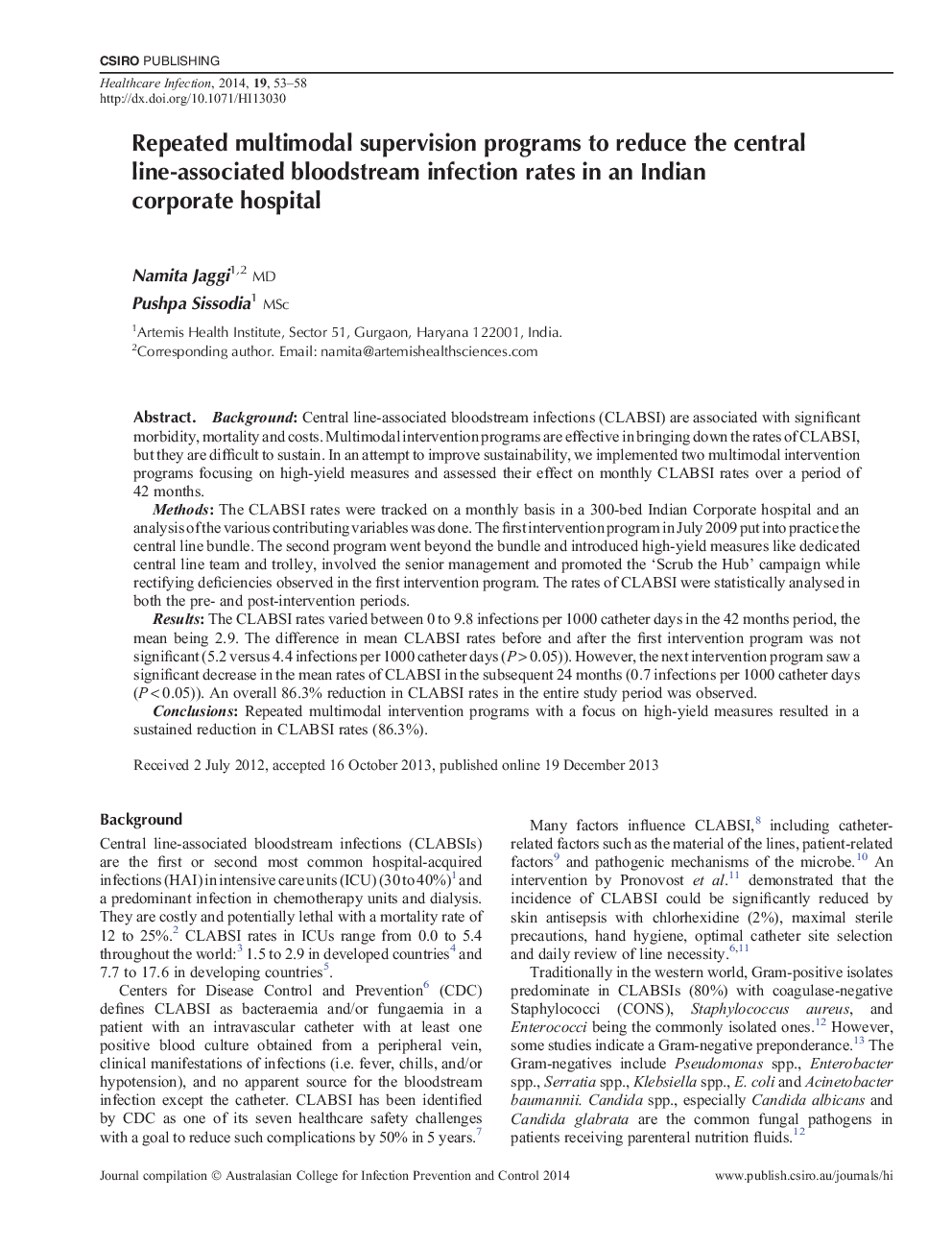| Article ID | Journal | Published Year | Pages | File Type |
|---|---|---|---|---|
| 2685346 | Healthcare infection | 2014 | 6 Pages |
BackgroundCentral line-associated bloodstream infections (CLABSI) are associated with significant morbidity, mortality and costs. Multimodal intervention programs are effective in bringing down the rates of CLABSI, but they are difficult to sustain. In an attempt to improve sustainability, we implemented two multimodal intervention programs focusing on high-yield measures and assessed their effect on monthly CLABSI rates over a period of 42 months.MethodsThe CLABSI rates were tracked on a monthly basis in a 300-bed Indian Corporate hospital and an analysis of the various contributing variables was done. The first intervention programin July 2009 put into practice the central line bundle. The second program went beyond the bundle and introduced high-yield measures like dedicated central line team and trolley, involved the senior management and promoted the ‘Scrub the Hub’ campaign while rectifying deficiencies observed in the first intervention program. The rates of CLABSI were statistically analysed in both the pre- and post-intervention periods.ResultsThe CLABSI rates varied between 0 to 9.8 infections per 1000 catheter days in the 42 months period, the mean being 2.9. The difference in mean CLABSI rates before and after the first intervention program was not significant (5.2 versus 4.4 infections per 1000 catheter days (P > 0.05)). However, the next intervention programsaw a significant decrease in the mean rates of CLABSI in the subsequent 24 months (0.7 infections per 1000 catheter days (P < 0.05)). An overall 86.3% reduction in CLABSI rates in the entire study period was observed.ConclusionsRepeated multimodal intervention programs with a focus on high-yield measures resulted in a sustained reduction in CLABSI rates (86.3%).
